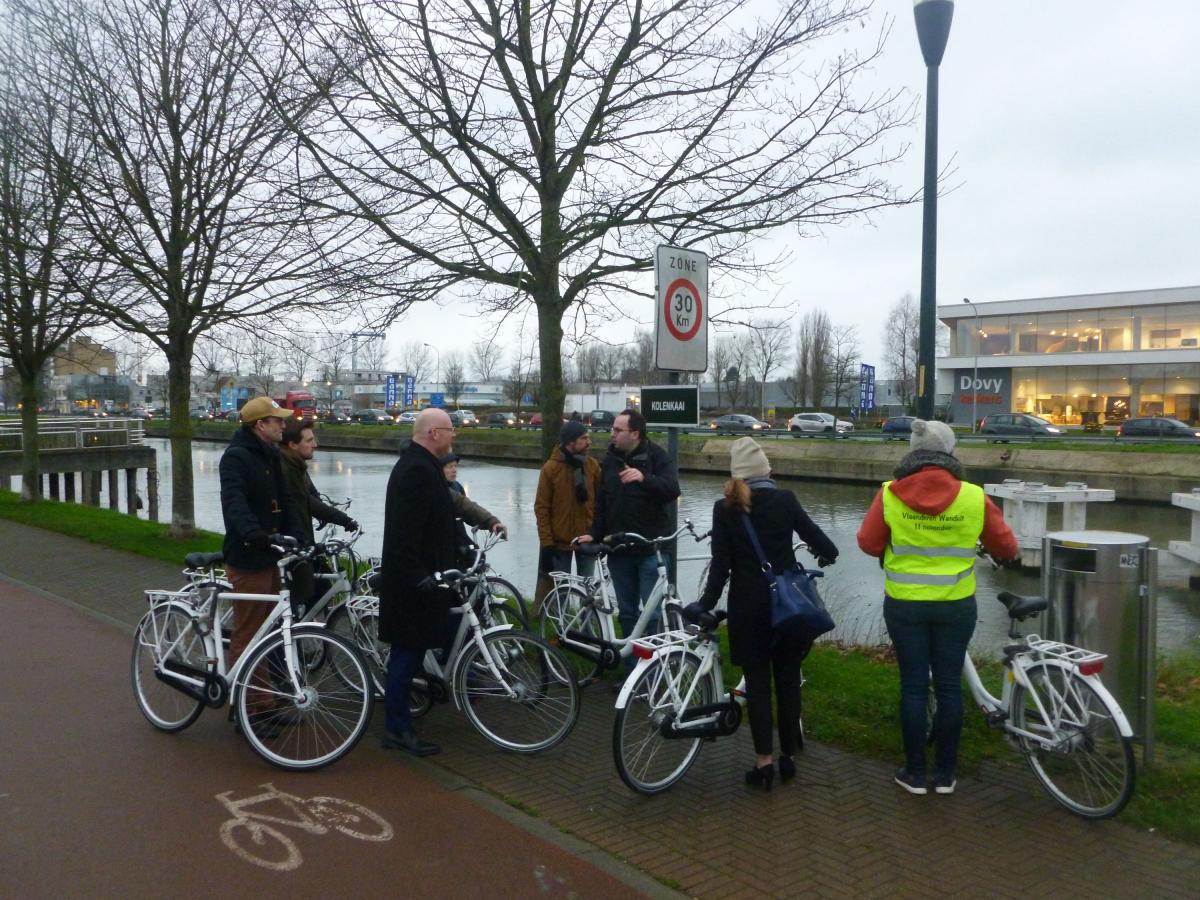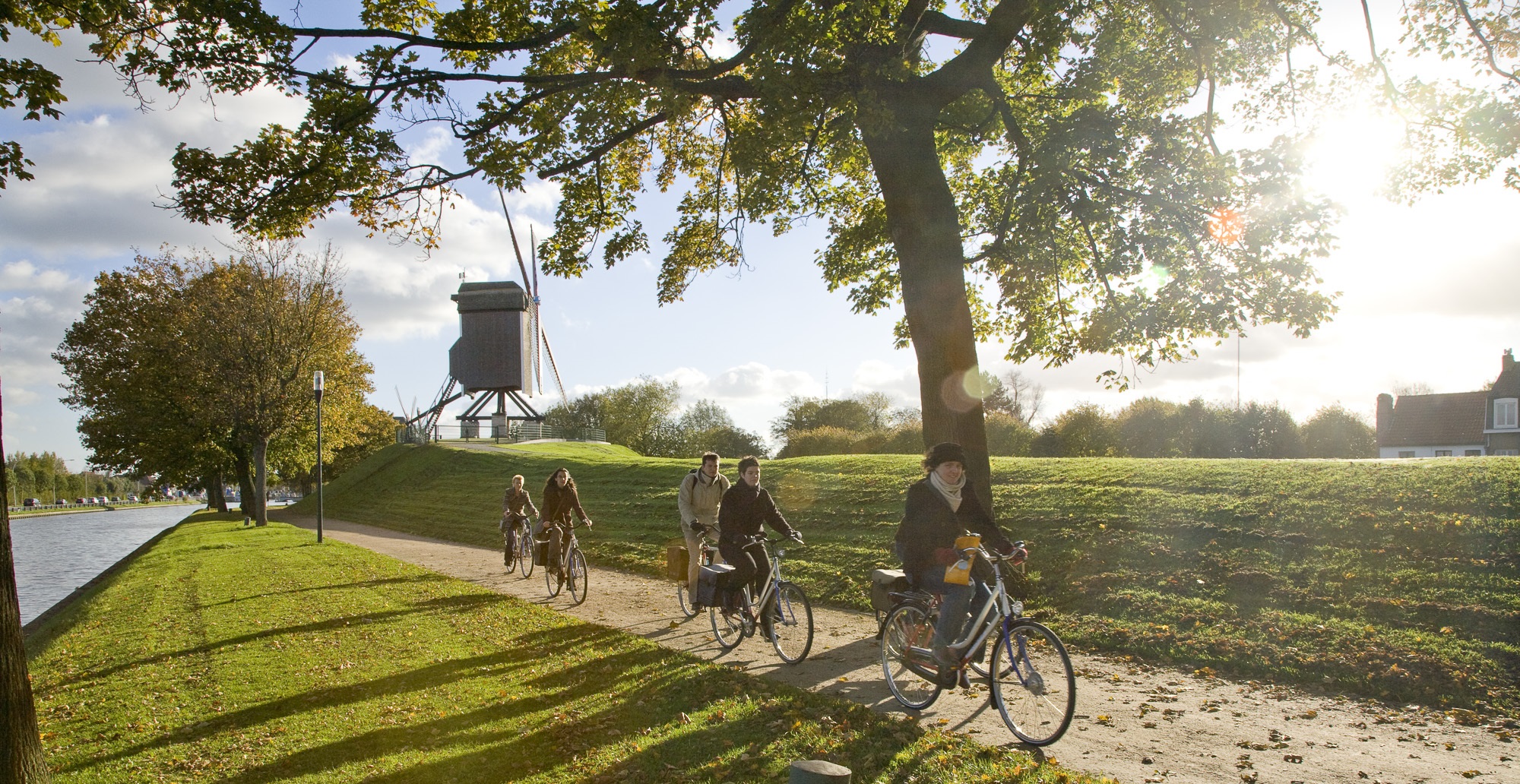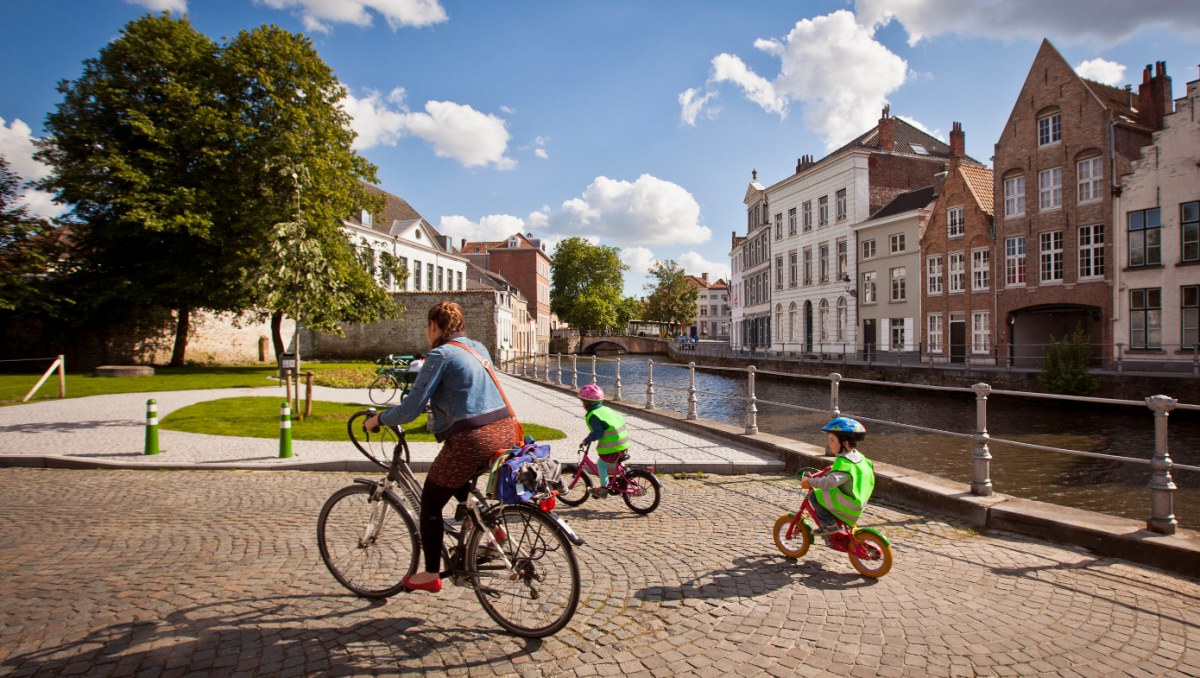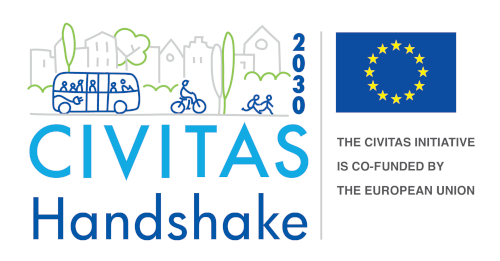The Handshake Roll
The Handshake Roll is a series of blog posts by our Handshake participants and connected parties, published here on the news pages of Handshake.
This article explores Bruges's mission to become Belgium's best cycling city, and how Handshake is helping it achieve that.
The person with the pen is Bart Slabbinck, who works for the City of Bruges as a Project Manager in the Mobility Deparment. He is focused on delivering the aforementioned cycling network.
7 minute read
Bruges is ambitious. Although it is already an established cycling city with a high modal share of 42 per cent, it wants more. Indeed, it aspires to become Belgium’s leading cycling city.
To achieve this, the city wants to create an even more comprehensive cycling network. Its involvement in Handshake is helping it ascertain what form this should take.
A deep dive into cycling in Bruges
A series of immersive study activities are bringing Bruges into contact with international experts and leading cycling cities. As part of this, a delegation comprising over 20 city representatives and experts d travelled to the city for a two-day symposium in mid-January.
This group – including the City of Amsterdam, West 8, Copenhagenize Design Co. and Vectris - immersed itself in cycling there and set out to help Bruges create the inclusive, interconnected cycling network it so desires.
Although its ambitious FR30 bicycle ring road will form the basis of this, a recent study into the city’s traffic flows has made clear that this alone is not enough. What is required then?
A series of workshops, group activities and reflection time shed light on possible answers, with fishbowl sessions, a cycling tour and presentations generating immense insight. The city’s transition arena is also contributing to network development.
Less speed, more city
One of the main debates centred around whether Bruges wants its network to focus on the concept of “flow”, which prioritises fluidity and speed, or “places“, which emphasises shared urban life and human interaction.
With Bruges‘s iconic old town full of tourists and residents and its surrounding canals serving as both radial routes and places of interest, the city has a delicate balance to strike.
After the two days of intensive exchange, the city determined the core aim of its network: less speed and more city. The concept underpinning this is a cycling network conceived as if it were made of lace, fitting for a place known for its production.
The lace metaphor reflects the individual traffic patterns uncovered by a recent study into the city’s traffic flows; what starts as a gentle flow in local streets becomes heavier as users reach main cycling corridors.
The study has served as the basis for a potential ring road route and, more broadly, prompted Bruges to develop its vision for its cycling network. The FR30 should form the backbone of this. Once complete, it should integrate safe crossing points over the R30 (the main ring road for cars) and connect with the city’s planned cycle superhighway.
At the same time, the FR30 and wider network must take into consideration the delicate fabric of Bruges’s UNESCO-protected city centre and ensure its busiest cycling routes, which run predominantly from north to south, have sufficient capacity.
Be inspired by others, not overawed
In coming up with its ideas, Bruges has drawn inspiration from other European cities. For instance, the work of Amsterdam (the Netherlands), Copenhagen (Denmark) and Strasbourg (France) was presented during the symposium.
Amsterdam made clear that sometimes flows and places can (and indeed should) be mixed, whilst at a micro-level it shows how intelligent street and crossing design facilitates safe and comfortable cycling.
““On a more abstract level, something crucial crystallised in our minds during the symposium. We realised that it is not a question of how Bruges can become more like Amsterdam, Copenhagen, or Strasbourg, but of how Bruges can become a better version of itself thanks to bikes. The two days in January will prove invaluable in helping us achieve this".
Eveline Buyck, EU Projects Manager, City of Bruges
Copenhagen provides a strong policy case for the benefits of cycling investment at a macro, city-wide level. Strasbourg demonstrates how a medium-sized city can create a cycling network that effectively balances various user needs and avoids potential conflicts, for instance by ensuring that routes avoid busy pedestrian areas.
The best is yet to come
In the immediate future, Bruges is seeking to build support for its plans via quick wins. Over the coming months, these and other ideas will be compiled in a brochure that will also include a roadmap setting out the timeline for Bruges’s cycling transformation. This is due to be presented to the city council by summer 2020.
Above all, the local authority is focusing on its cycling network study and using its results to formulate a strategic vision. This will guide both cycling and sustainable mobility work over the next 10 to 20 years. As the words adorning the Gruuthuse coat of arms, one of Bruges’s most famous merchant families, say: “Plus est en vous“ - “the best is yet to come“.
Finding out more
All presentations from the immersive symposium are here. Keep up with the latest in Bruges on its Handshake page. Discover what else is going in Handshake by subscribing to the project’s newsletter here.
Finally, thank you to Clotilde Imbert, Director of Copenhagenize Design Co., France, who contributed her expertise to the symposium and this article.





